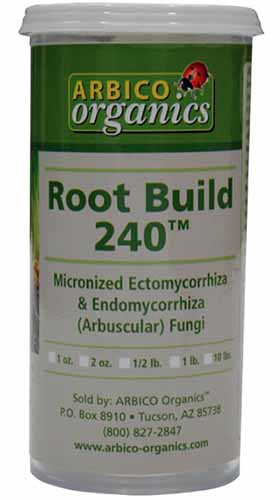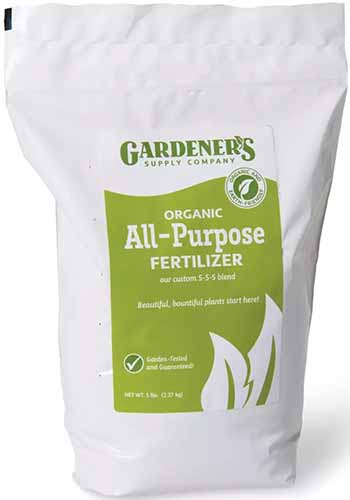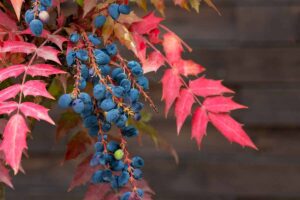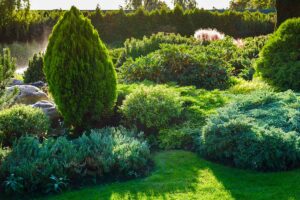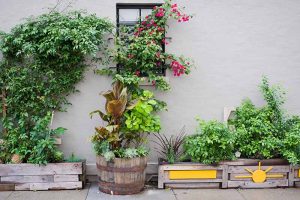Taxus x media ‘Hicksii’
Let me introduce you to the ‘Hicksii’ yew, an evergreen shrub that’s become a good friend of mine.
When I first met ‘Hicksii,’ I’ll admit I wasn’t particularly impressed, but over the last decade we’ve become quite close.
With the purchase of my property, a mass planting of these shrubs came with the deal. They sat, 10 in a row, perched on the side of the hill, framing a scraggly, unkept garden and looking – frankly – forlorn.
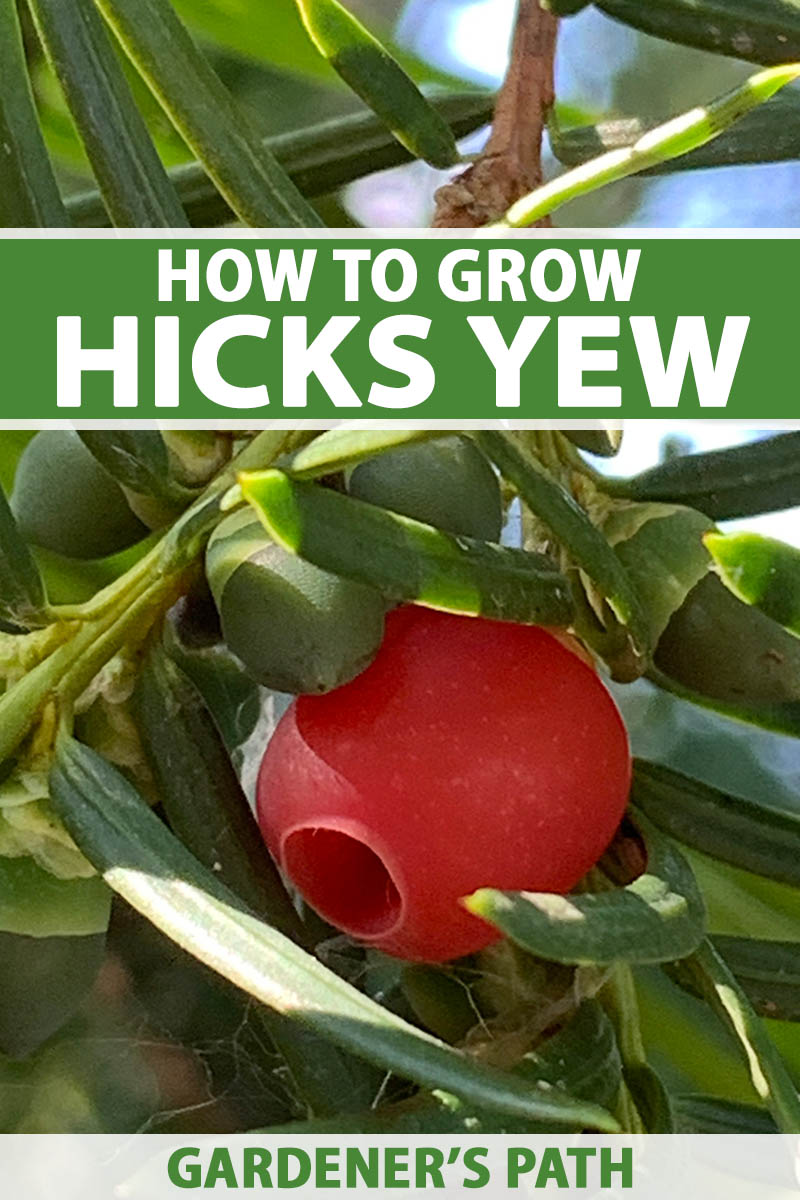
We link to vendors to help you find relevant products. If you buy from one of our links, we may earn a commission.
At that time, my main gardening goal was to develop a food forest, with the obvious intent to feed humans.
‘Hicksii’ is toxic to humans, as are all yews, so I wasn’t sold on the idea of using valuable space to keep them around.
But as my overall plan has evolved, I’ve grown to love these garden pals so much that I’ve even added a few more to my landscape over the last decade.
The Hicks yew is my low-maintenance, hard-working hero. With a large property, I don’t have the time and resources to devote to every nook and cranny of my landscape, and this shrub has been a game-changer. It’s my ornamental BFF.
If you haven’t considered it yet, or if you’re here to learn more about ‘Hicksii,’ you’re in the right place.
In this article, I’ll cover all the things I love about my buddy, and I’ll tell you how to grow, care for, and find these shrubs for your own garden. Here’s a quick preview:
What You’ll Learn
Ready to learn more about this dependable evergreen shrub? Let’s do it, folks!
What Is Hicks Yew?
Commonly known as Hicks yew, Hicks hybrid yew, or Hicks intermediate yew, this evergreen conifer shrub is a popular standout in the Taxus genus.
‘Hicksii’ is a hybrid cultivar, born from the union of the English yew (T. baccata) and the Japanese yew (T. cuspidata).
So, it’s got genes from the best of both worlds: the ornamental value of its English parent paired with the winter hardiness gained from its Japanese lineage. You could call this plant a global citizen!
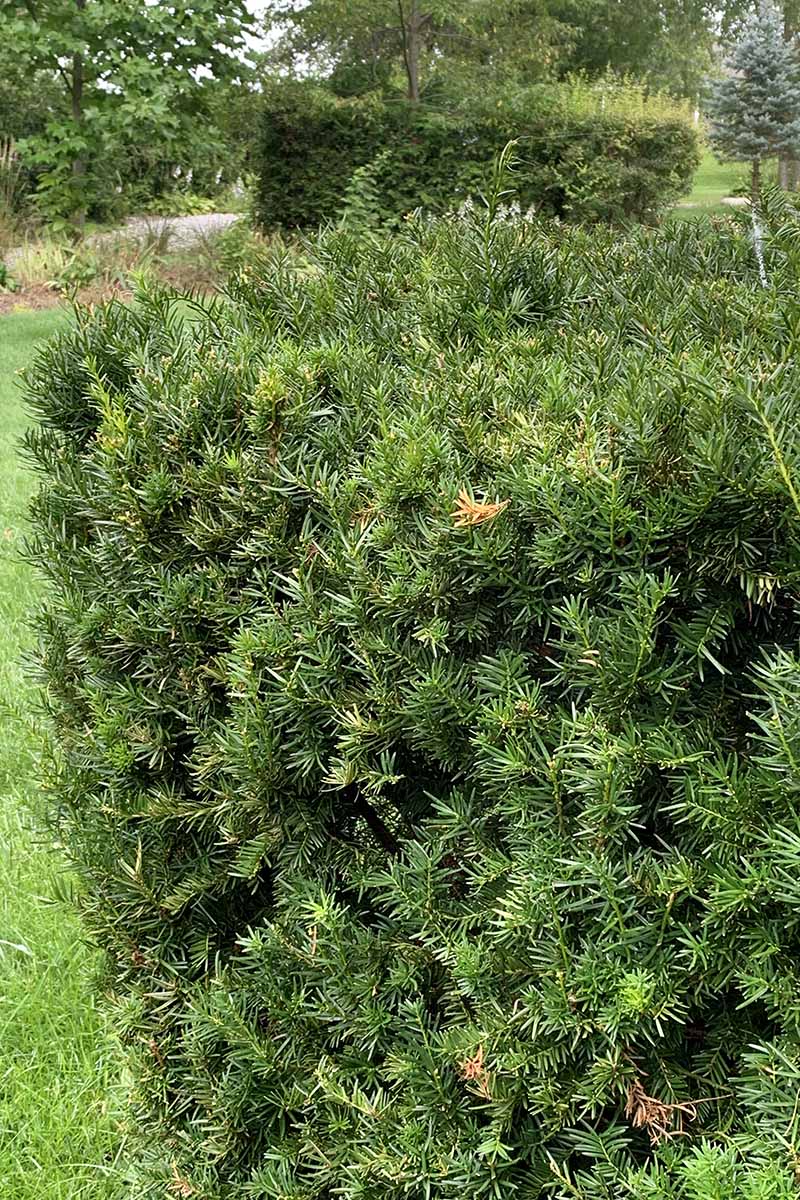
The designation Taxus x media is given to a large group of hybrid cultivars that can vary considerably in size and character.
The ‘Hicksii’ yew has a dense and narrow columnar growth habit, reaching an average size of nine to 12 feet tall with a spread that spans about one-half to one-third of its height.
Over time, when allowed to grow to its natural shape, the top of the plant becomes wider than the base.
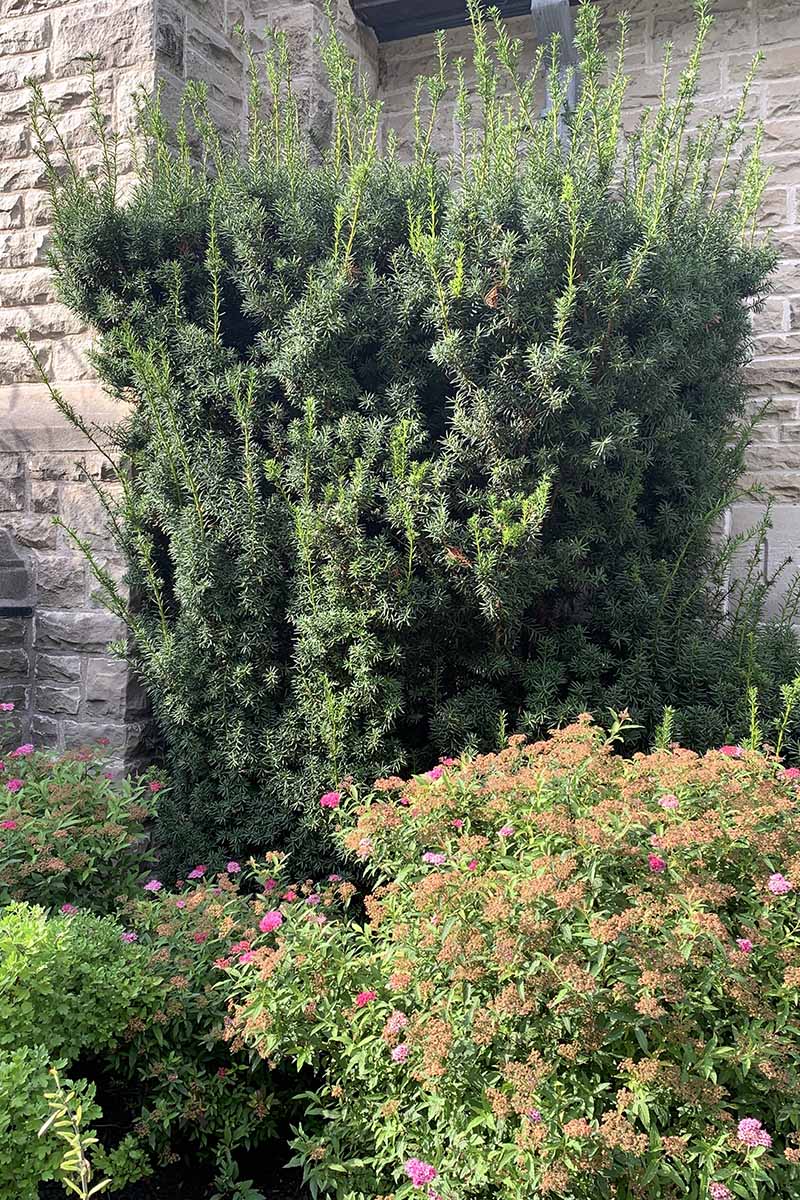
The needles are glossy dark green on top and light green underneath, and remain on the plant year-round, making it an all-season eye-catcher.
You might be wondering, “Where can I grow this beauty?” Well, it thrives in USDA Hardiness Zones 4 to 7. It’s not too picky but does the best in well-drained, fertile, and moist soil conditions.
If you’re looking for a plant that’s versatile, hardy, and downright good-looking, ‘Hicksii’ might just be your new garden BFF too.
Since this plant is a cultivated hybrid, it’s got some history! Curious to know the whole story? Let’s dive into a full lesson, shall we?
Cultivation and History
The ‘Hicksii’ yew is a bit of a hybrid globetrotter in the botanical world, with English and Japanese lineage. The hybridization of these two yews, however, took place right here in North America.
In 1904, a horticulturist from Massachusetts named T. D. Hatfield began experimenting with raising new hybrids from seed. His work is documented in a paper he published in 1929.
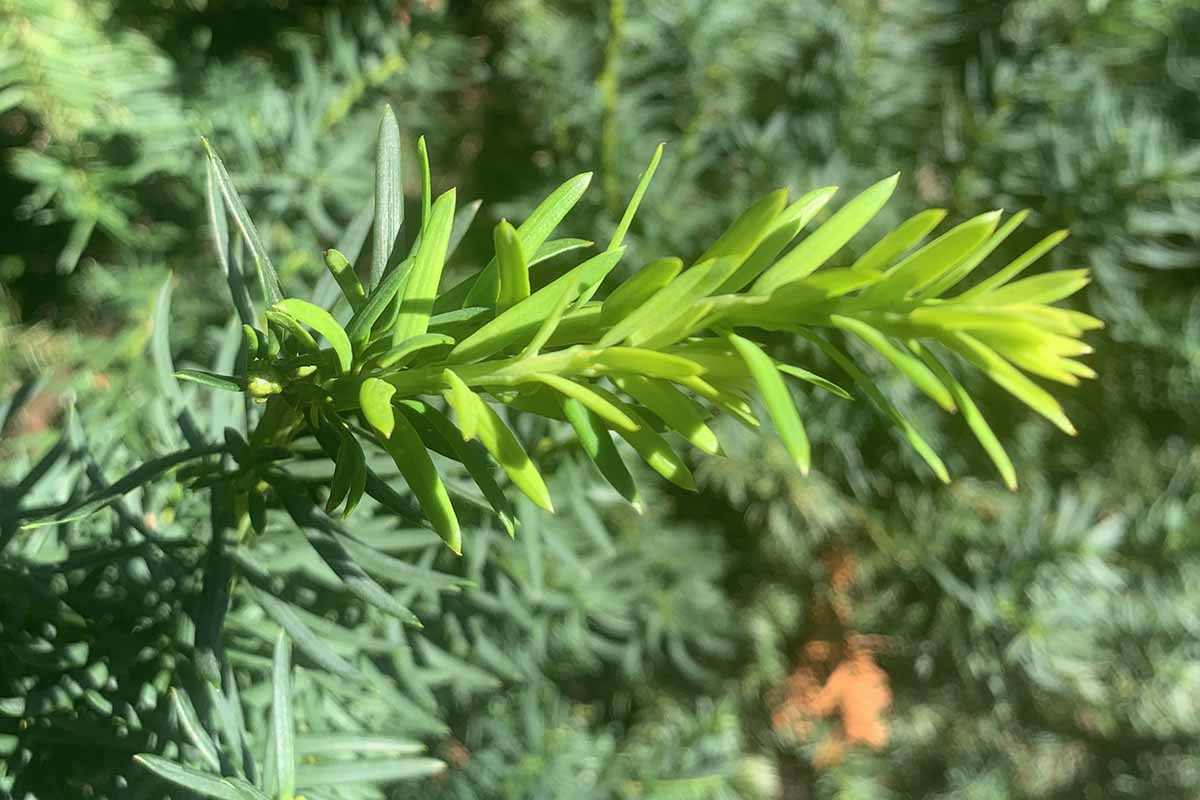
Around the same time, a nurseryman named Henry Hicks was experimenting with growing seedlings at his nursery, Hicks Nurseries, Inc., in Long Island, New York.
In a 1924 Hicks Nursery catalog, he introduced his new selection, ‘Hicksii,’ to the world, and it’s been a popular choice ever since.
This plant’s beauty, combined with its functional versatility, caught the eye of gardeners and horticulturists. It thrives in well-drained soils, tolerates drought, and can even withstand less than ideal urban conditions like pollution.
This popular plant has truly stood the test of time. So, whether you’re a seasoned gardener or a newbie with a spade, the ‘Hicksii’ yew offers a blend of beauty, versatility, and history that’s hard to resist.
If you’re wondering how to get your hands on this gorgeous, green shrub, let’s investigate propagation methods.
Hicks Yew Propagation
So, you’re thinking of propagating your own ‘Hicksii’ yew, huh? Well, let’s dive into the nitty-gritty of how to make that happen.
Let’s first address the option of growing this plant from seed.
While it’s true that yews do produce seeds encased in a fleshy aril, it’s important to note that ‘Hicksii’ is a cultivated hybrid plant. This means that a propagated seedling will not grow true to the parent plant.
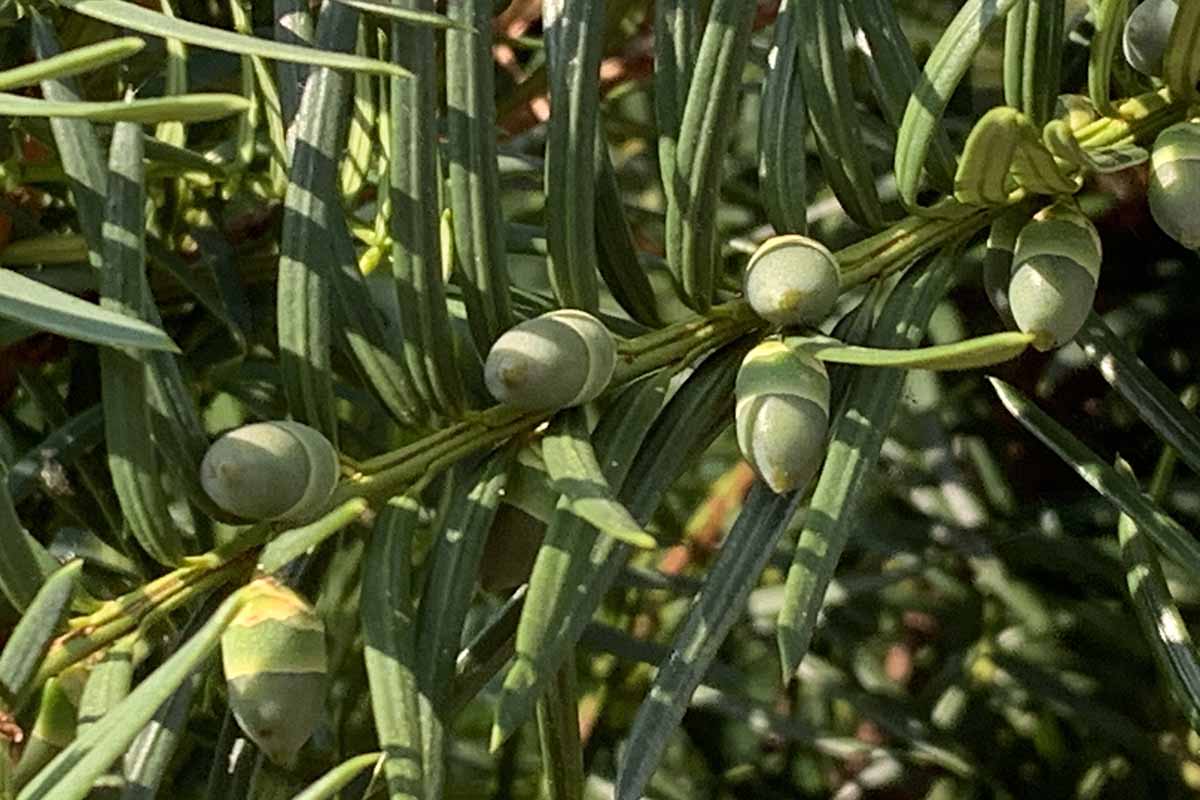
As for division, that’s generally not recommended for yews. They have a complex root system that doesn’t take kindly to being split, and with this type of treatment you may run the risk of losing your plant.
Hicks yews are generally propagated from cuttings which are usually taken from semi-hardwood stems and treated with rooting hormone to encourage root development.
It’s a bit of a waiting game, but if you’re patient and have a green thumb, you will end up with a new plant that’s a spitting image of its parent.
If you’re patient and into the joy of watching something grow from scratch and have the time to spare, go for it!
But if you’re looking for a faster, less labor-intensive, and more reliable route, snagging a potted ‘Hicksii’ from a reputable nursery is going to be your best bet. It’s easy and gives an immediate payoff.
Transplanting
I’ll fast-forward through your shopping trip where you pick up your baby yew – for more tips to acquire a nursery plant, see the Where to Buy section of this guide below.
Assuming you have your potted plant in your possession, let’s walk through the steps of transplanting. Roll up your sleeves. Let’s go!
First things first, pick a spot that gets a good mix of sun and shade. ‘Hicksii’ isn’t too fussy but does appreciate well-drained, fertile soil. So, if your garden is swampy, you might want to reconsider your chosen location.
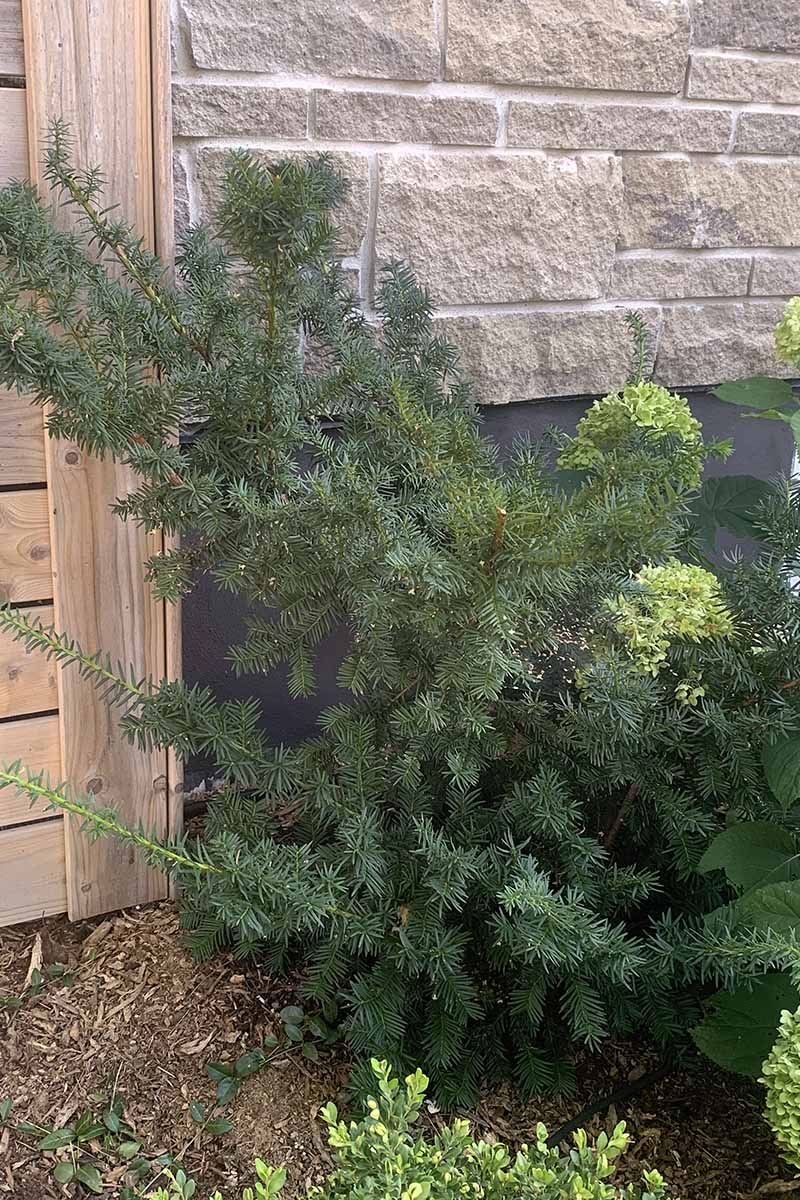
Once you’ve got the perfect spot, dig a hole that’s about twice the width of the pot and just as deep. This gives the roots some room to stretch out and get comfy.
Before you plop the plant in, mix some organic matter into the soil at the bottom of the hole. Trust me, your yew will thank you for it later.
Now, gently remove the yew from its pot. If it’s clinging on for dear life, give the sides of the pot a good tap. Be sure to tease out pot bound roots and trim any that look unhealthy.
While it’s never a good idea to add fertilizer during planting, I am a fan of products that encourage the growth of beneficial fungi. Consider inoculating your soil with mycorrhizal fungi at this point.
I recommend Root Build 240, sold by Arbico Organics.
Now, place the plant in the hole, making sure it’s at the same depth it was in the pot. Fill the hole back in with soil, tamping it down as you go to remove any air pockets.
Water generously right after planting. This helps settle the soil and gives the roots a good drink.
For the first few weeks, keep an eye on the moisture level and water as needed. These yews are pretty drought tolerant once established, but they do like a good drink now and then.
And voila! You’ve successfully transplanted your ‘Hicksii’ yew. Give yourself a pat on the back and mix a celebratory cocktail or fancy mocktail; you’ve earned it!
In summary, while the art of propagation is fascinating, it’s not for the faint of heart—or the impatient. But hey, gardening is all about the journey, right?
So, whether you choose to propagate or to purchase, you’re in for a rewarding experience growing your new shrub.
Speaking of growing, let’s investigate the needs of Hicks yew a little further. As I always say, every bit of knowledge helps, right? Let’s grow.
How to Grow Hicks Yew
Alright, folks. Let’s discuss the best growing conditions and how to care for your ‘Hicksii’ yew in more detail.
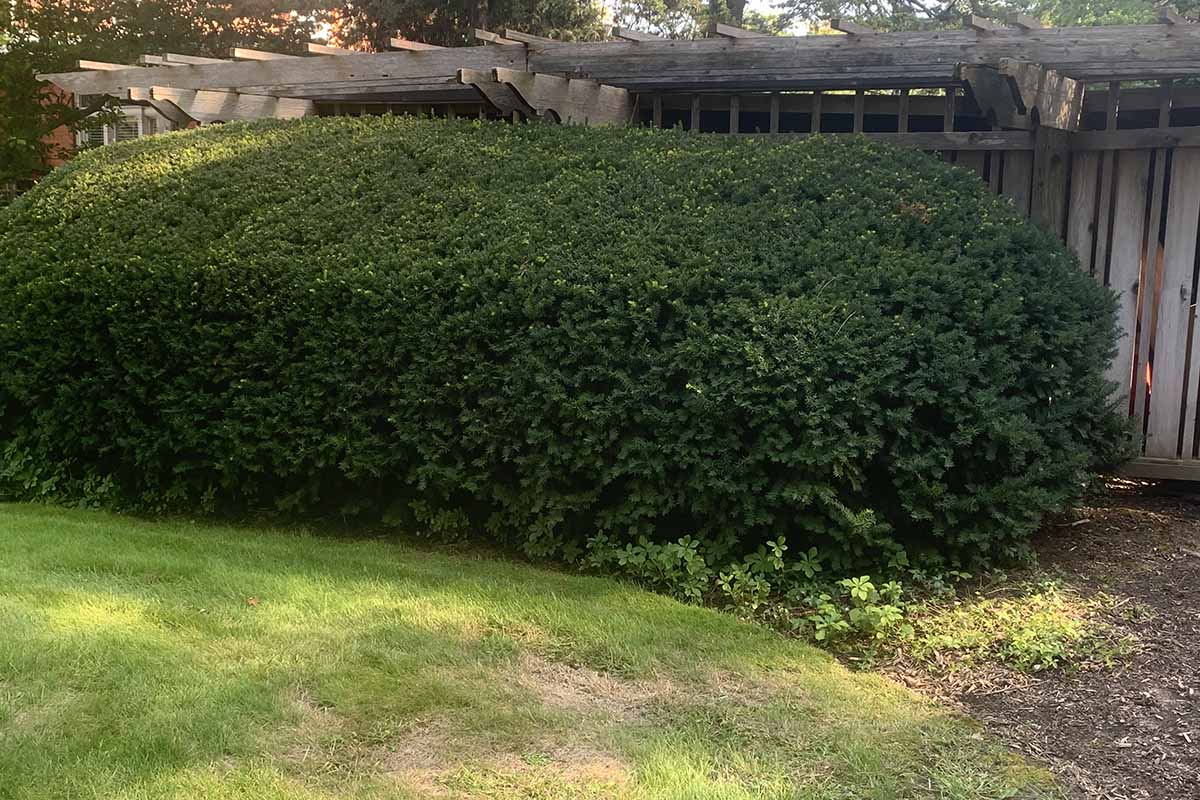
First off, the ideal location is flexible. Suited to USDA Zones 4 to 7, making it quite a resilient choice for various climates, this plant is pretty darn versatile, thriving in both full sun and part shade.
So, whether you’ve got a sunny spot or a partially shaded corner, as long as it has sufficient room to grow, your shrub will be happy.
What about spacing?
As I mentioned, the average height of this shrub is nine to 12 feet. The key word here is “average.” A quick online search will reveal a confusing range of six to 20 feet.
And since the mature spread is about one-half to one-third of the height, this means your shrub could be anywhere between two and ten feet wide. So, what gives?
Environmental factors can play a role. Soil quality, water availability, and even the amount of sun or shade the plant receives can influence its growth.
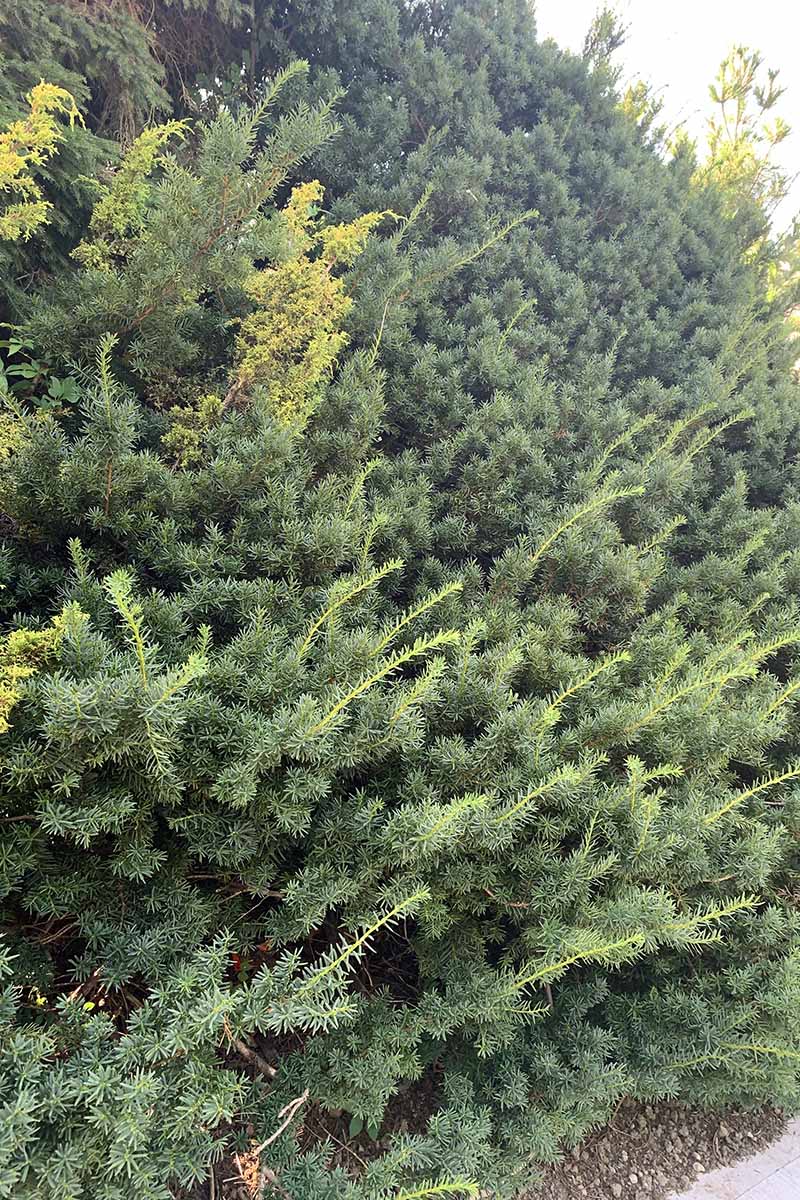
It’s like how you might thrive in a bustling city while your twin prefers the quiet countryside.
Also, care and maintenance can’t be overlooked. Pruning, fertilizing, and general TLC can all impact how plants grow. It’s the plant equivalent of going to the gym; you get out what you put in.
Because the height and width of these shrubs can vary widely, it’s not entirely a roll of the dice. You can still plan ahead. Read the nursery tag and ask a professional in the nursery or greenhouse for help to determine the correct spacing.
Now, let’s talk about soil. As I’ve mentioned, this plant is not too fussy but prefers well-drained, fertile soil. Sandy or loamy soils are best.
And guess what? It’s drought tolerant too! But don’t let it swim; it doesn’t like wet feet. ‘Hicksii’ also prefers soil with a pH level of 6.0 to 7.0.
What are the watering needs of this shrub? Well, it’s a bit of a Goldilocks situation – not too much, not too little.
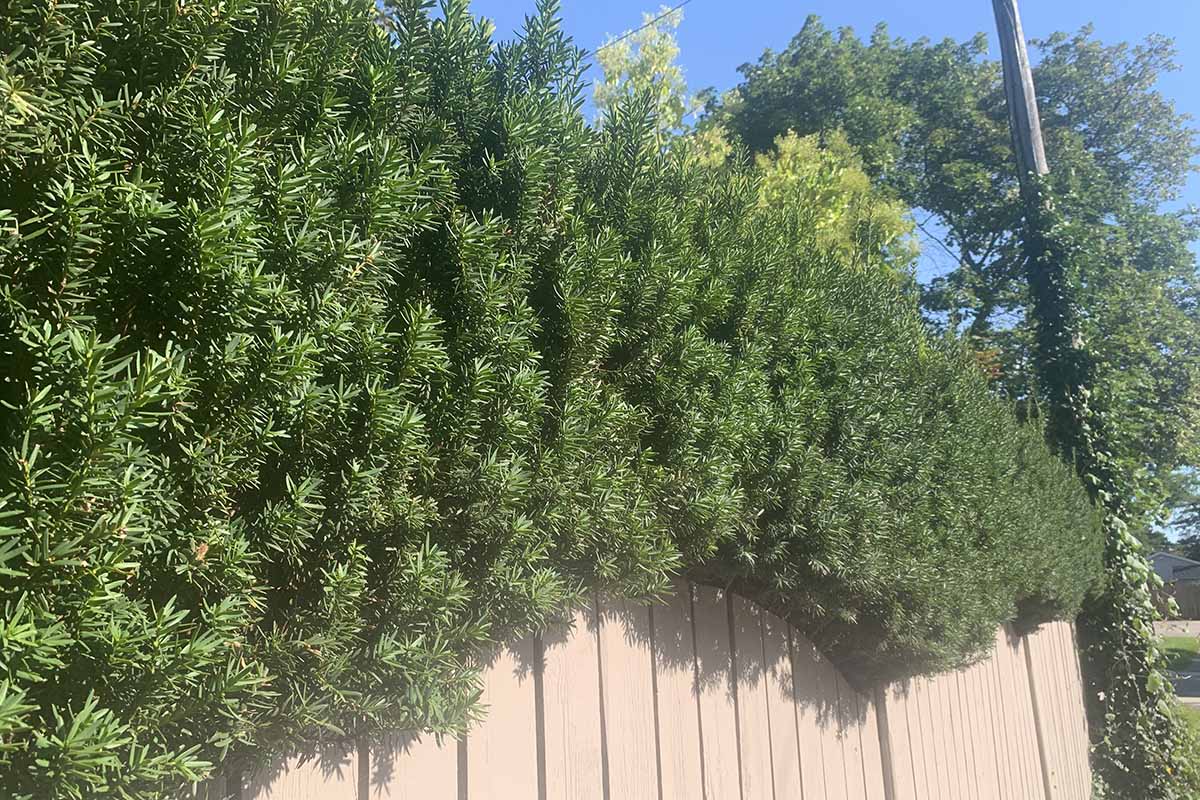
Make sure the soil is moist but well-drained. Overwatering can lead to root rot, and nobody wants that.
Here’s a bonus: this plant is a bit of a social butterfly. It gets along well with most garden plants.
But heed this warning: eating the seeds inside the berries of yews poses the highest risk of toxicity, but all parts of the plant, aboveground and below, are poisonous to humans and pets if ingested. So don’t let Fido dig to hide his bones near your ‘Hicksii’ yew.
To sum it up, pick a sunny or partially shaded spot, give it well-drained soil, water it just right, and give it room to grow. Like I said: easy peasy, right?
If you want to learn more, read our comprehensive yew growing guide.
Growing Tips
- Choose a location with full sun to part shade.
- Plant in well-draining, fertile, sandy or loamy soil with a pH of 6.0 to 7.0.
- Keep soil moist but avoid overwatering.
Pruning and Maintenance
‘Hicksii’ yew is as versatile as it is resilient. But even the hardiest plants could use a little TLC, right? So, I’ll cover a few items to help you keep this evergreen beauty in tip-top shape.
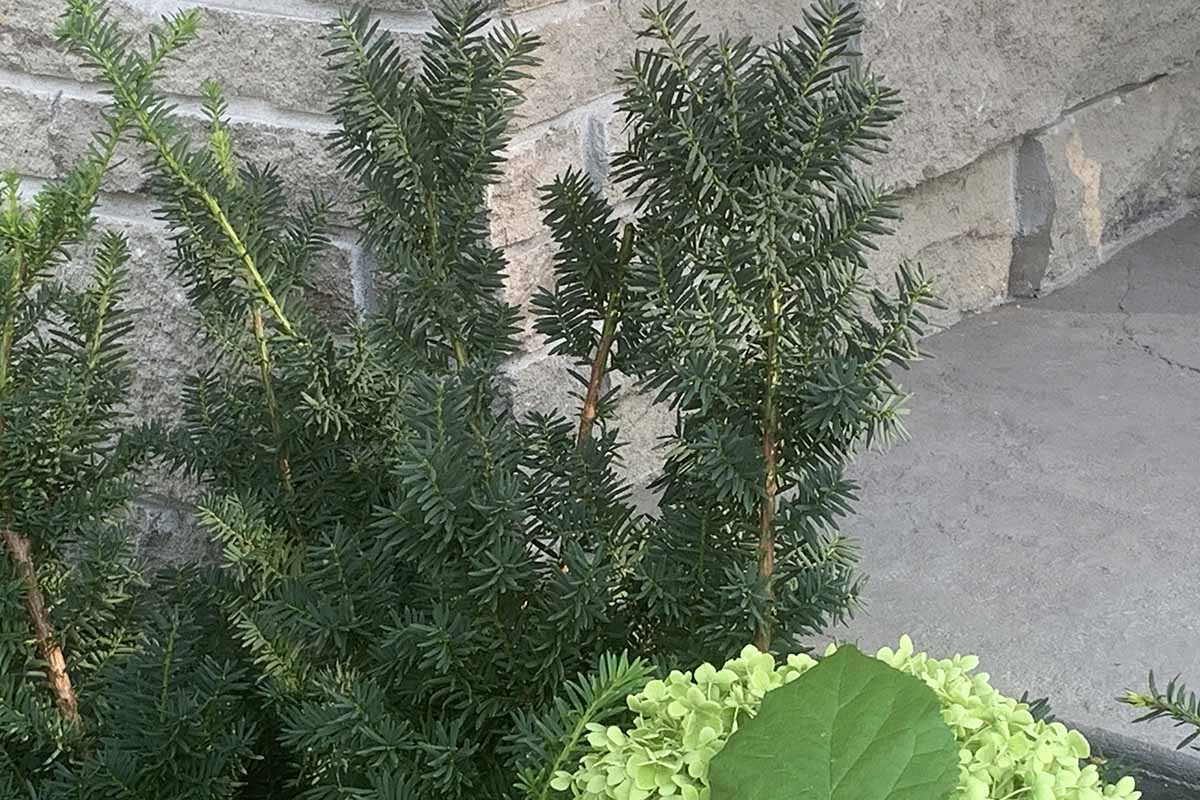
First things first, let’s talk about pruning. This shrub is forgiving when it comes to snipping and shaping. You can manage its height and control its shape through pruning, and it tolerates even the most severe cuts.
The best time for pruning is in late winter to early spring, before new growth starts.
Whether you’re going for a topiary masterpiece or just a neat hedge, this yew’s got you covered.
As for fertilizing, this plant isn’t too fussy. It grows best in fertile, moist soil, so a balanced fertilizer should do the trick. Skip the first year of planting, and apply annually every spring.
Just don’t go overboard; too much of a good thing can lead to issues and a little goes a long way!
If you’re hunting for a good all-purpose, balanced product, I like Gardener’s Best All-Purpose Organic Fertilizer.
Gardener’s Best All-Purpose Organic Fertilizer
It’s a granular, slow-release, 5-5-5 (NPK) fertilizer that’s available from Gardener’s Supply Company.
Follow the instructions on the package for shrubs and trees.
Mulching is your friend, especially if you’re looking to conserve moisture and keep those weeds at bay.
A two- to three-inch layer of organic mulch around the base should suffice. Just make sure you don’t pile it up against the trunk; we don’t want to encourage rot and disease.
Speaking of weeds, let’s talk about the garden chore we all love to hate. Keeping the area around your shrub weed-free is more than just an aesthetic choice; it’s about giving your plant the space to thrive.
Weeds can compete with your yew for nutrients, water, and sunlight, so it’s best to keep them at bay. A simple hand-pulling session every now and then should do the trick.
If you’ve mulched properly, this task becomes even easier, as mulch helps to suppress weed growth.
So, put on your favorite gardening gloves and hold a weekend weeding party. Your yew will thank you for it!
And there you have it – with pruning, fertilizing, mulching, and now weeding under your belt, you’re well on your way to becoming a ‘Hicksii’ yew whisperer.
If this carefree shrub has captured your attention, keep reading to learn where to find one (or many) to add to your own garden.
Where to Buy
So, you’ve decided that ‘Hicksii’ yew is the missing piece in your garden puzzle. Fantastic! Now, where to find this evergreen gem?
Well, you’re in luck. If you reside in USDA Zones 4 to 7, chances are good that you won’t need to go on a wild goose chase.
These plants are quite popular and are commonly stocked in local nurseries and greenhouses. Just pop in, and you’ll likely spot them hanging out, waiting for a forever home like yours.
But what if you’re more of an online shopper, or perhaps local options are slim? No worries, the internet’s got your back. There are reputable online sellers that can deliver right to your doorstep.
If you’re planning a hedge or other design that requires multiple plants, check out ‘Hicksii’ at Planting Tree. These shrubs are available in one- and three-gallon containers.
And if you’re looking for a larger, more established shrub, skip ahead a few years and visit Nature Hills Nursery.
They sell container-grown ‘Hicksii’ yew plants in #5 containers that are already three to five years old.
So, whether you’re an in-person or digital browser, finding this evergreen is easy.
Managing Pests and Disease
It’s time to tackle the eternal struggle between gardeners and nature. While ‘Hicksii’ yews are generally hardy plants, they’re not entirely immune to the woes of the garden.
As with all pests and disease, observation and proper plant management is key.
Watch for signs of distress, inspect plants regularly, practice sanitary garden methods, and react in a timely manner if you spot an issue.
This shrub may be susceptible to a few herbivores and a couple of insect critters, as well as a few undesirable diseases.
Herbivores
As I mentioned earlier, ‘Hicksii’ yew plants are toxic to humans and pets.
The needles, seeds, and even the wood and roots are poisonous. All domesticated animals, including livestock, should steer clear.
Thankfully, rabbits seem to know better, so they shouldn’t bother your yews.
But a few animals seem to escape these toxic effects. Wild deer, moose, and elk can chomp these plants and walk away unscathed.
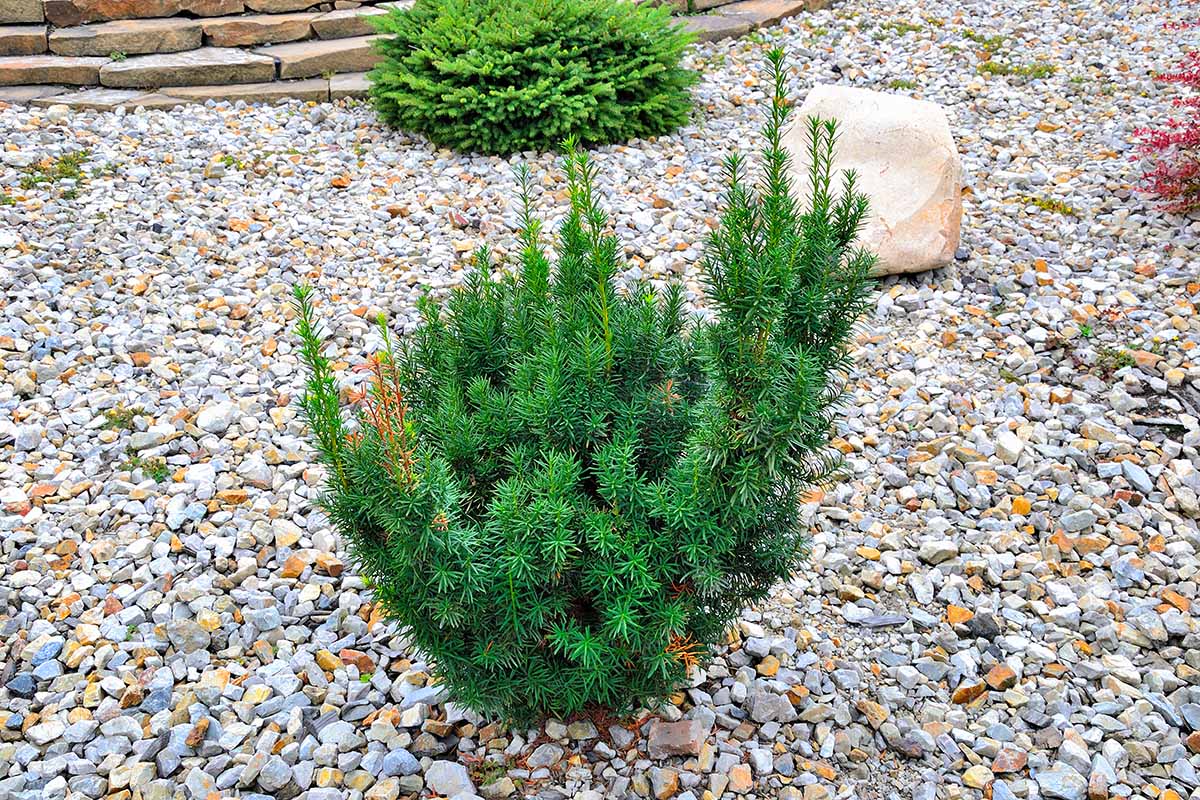
This means that if you live in a rural setting where these specific creatures frequent your gardens, be on the lookout for damage, especially in the winter when food sources are scarce.
If it becomes an issue you may want to consider installing deer fencing to deter unwanted visitors to the garden buffet.
Insects
I’m sorry if bugs make you squeamish, but we need to talk about them. Not only can they directly damage your plants, but they can also indirectly introduce pathogens.
While these bugs might give you a bit of a headache, they’re not unbeatable. A little vigilance and the right treatment can go a long way. Let’s take a closer look.
Bud Mites
These tiny critters, Cecidophyopsis psilaspis, can cause damage and even death to buds. They tend to overwinter between bud scales, and peak in late summer and early fall.
If you notice distorted needles and shoots, it’s time to act. Treatment with insecticidal soap or horticultural oil can help control these mites.
Mealybugs
Adult female mealybugs are small, brownish colored, oval-shaped, and appear waxy and covered in white “fluff.” They can be hard to spot as they like to hide in the interior of the plant.
Symptoms of infestation include leaf loss and concurrent infections with black sooty mold. If populations grow out of control, applying insecticides like neem oil can be effective.
Learn more about how to manage mealybugs in our guide.
Fletcher Scale
Adult fletcher scale females are globular soft scale insects that appear yellow to brown in color.
They can cause general plant health decline and produce sticky honeydew, attracting other pests and mold.
Horticultural oil or insecticidal soap can be effective for battling an infestation.
Check out our guide to scale insects to learn more.
Taxus Weevils
Otiorhynchus sulcatus, also known as Taxus weevils, are the most devastating of the root weevils.
The larvae, or grubs, feed on the roots of plants while the adult weevils, or beetles, are about half an inch long and may chew crescent-shaped holes in leaves.
Beneficial nematodes can be applied as a soil drench to control these pests in the larval stages. Steinernema carpocapsae and Steinernema glaseri are two kinds of nematodes that are effective against this insect.
NemAttack Beneficial Nematodes
If you’re looking for these “good guys,” head over to Arbico Organics to pick up NemAttack™ – Sc Beneficial Nematodes.
Tortrix Moth
This little guy is also known as the privet tortrix, or Clepsis consimilana. With a wingspan of 13 to 19 millimeters, it’s not the largest moth you’ll encounter, but it can be a nuisance.
The larvae are known to feed on privet, lilac, and – here’s the kicker – English yew.
So, if you’re noticing some leaf damage, you might want to keep an eye out for these critters. An infestation serious enough to require treatment is unusual, but, if necessary, a biopesticide like Bacillus thuringiensis can help control the larvae.
Bonide® Thuricide from Arbico Organics contains this non-toxic bacteria (Btk) and is highly effective in controlling moths while in the caterpillar stage.
I’ve used it during infestations of gypsy moths here in Ontario.
Disease
Here’s a look at a few common diseases known to plague yews, including ‘Hicksii.’
Armillaria Root Rot
The honey fungus, also known as Armillaria mellea, affects many species of ornamental trees and shrubs, including yews.
Symptoms include stunted vertical growth, sparse foliage, and stunted, yellow leaves.
The most distinctive sign of infection is the production of clusters of honey-colored mushrooms at the base of the shrub.
No effective chemical controls are known, but maintaining healthy plant vigor can help your yews to resist infection.
Needle Blight
This disease is caused by Pestalotiopsis species of fungi. Characterized by needle discoloration, it can lead to defoliation.
This disease is more common in stressed plants, so maintaining good cultural practices is key. Fungicides can also be used as a preventive measure.
Root Rot
Species of Phytophthora, soilborne oomycetes, can cause root rot, leading to wilting and death of the plant.
Good drainage and avoiding waterlogged conditions can help prevent this disease. Chemical control options are limited. Affected plants should be removed and destroyed.
Best Uses of Hicks Yew
What are the best ways to incorporate this hardworking yew into your garden? I like to think of this plant as a grounding force for the home landscape – stable, reliable, and supportive, like a best friend.
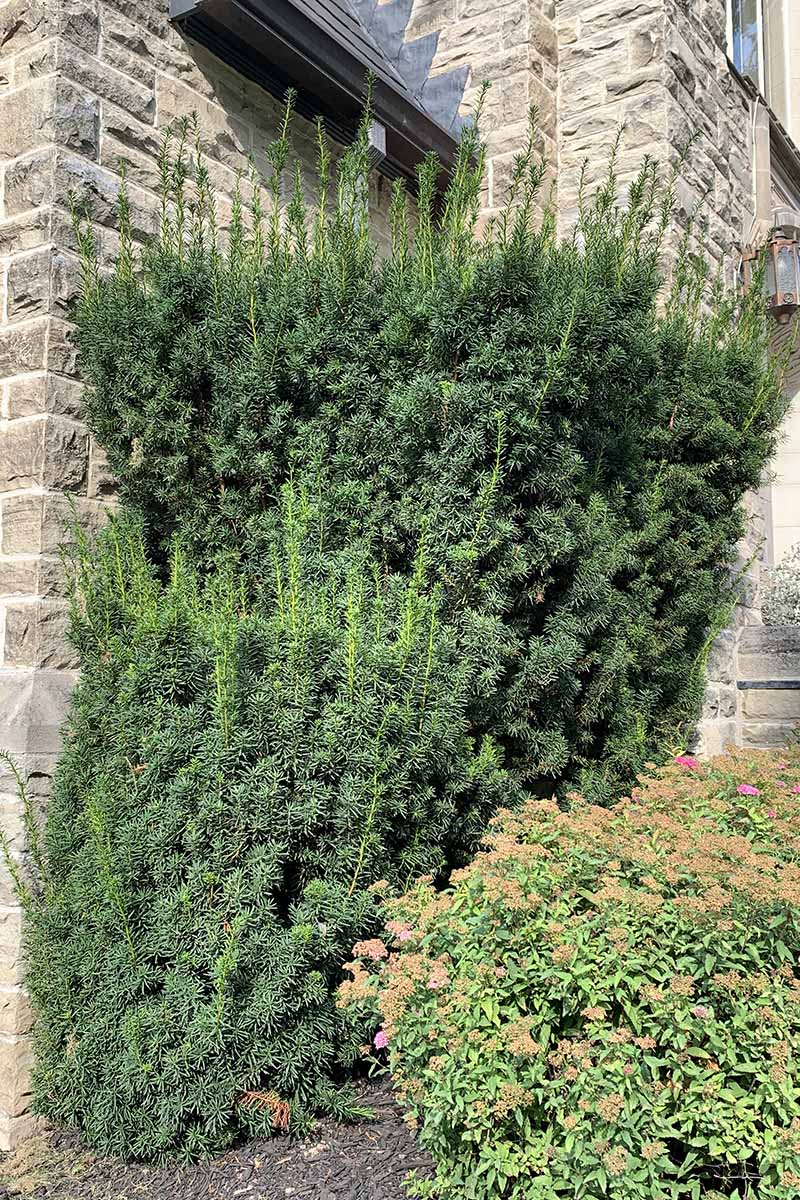
‘Hicksii’ is a real showstopper when it comes to hedging and screening. Its columnar, upright habit makes it an ideal choice for creating natural barriers or privacy screens.
Whether you’re looking to delineate your property, add a touch of green to an urban setting, or simply create a cozy, secluded corner in your garden, it’s up to the task.
Plus, its tolerance for various light conditions means you can plant it in full sun, partial shade, or even full shade, giving you plenty of options for placement.
But don’t just stop at hedging – this versatile plant has more to offer.
Its evergreen foliage provides year-round interest, making it a great addition to mixed borders or as a standalone specimen.
Imagine a ‘Hicksii’ yew as the centerpiece of a winter garden, its dark green needles contrasting beautifully with a blanket of snow. And go ahead, adorn it with twinkle lights!
Or picture it in a formal garden setting, pruned to your favorite shape and adding a touch of elegance.
The possibilities are endless, really. So, go ahead and let your gardening imagination run wild!
Quick Reference Growing Guide
| Plant Type: | Evergreen shrub | Foliage Color: | Green (red fruit) |
| Native to: | Cultivated variety | Maintenance: | Low |
| Hardiness (USDA Zone): | 4-7 | Tolerance: | Drought, pollution, rabbits, shade |
| Bloom Time / Season: | Non-flowering (berries in summer) | Soil Type: | Fertile, moist, sandy loam |
| Exposure: | Full sun to partial shade | Soil pH: | 6.0-7.0 |
| Time to Maturity: | 20-50 years (max height) | Soil Drainage: | Well-draining |
| Spacing: | Width of mature spread | Attracts: | Birds, squirrels |
| Planting Depth: | Depth: Depth of root system (transplants) | Uses: | Foundation planting, hedging, screening, specimen |
| Height: | 6-20 feet | Order: | Cupressales |
| Spread: | 3-12 feet | Family: | Taxaceae |
| Growth Rate: | Fast (juvenile), slow (mature) | Genus: | Taxus |
| Water Needs: | Moderate | Species: | x media |
| Common Pests and Diseases: | Bud mites, mealybugs, scale, taxus weevils, tortrix moths; Armillaria, needle blight, root rot | Cultivar: | Hicksii |
An Ornamental Hero for Life
My once-dismissed ‘Hicksii’ yews have become the unsung heroes of my garden.
From their low-maintenance nature to their versatility in diverse landscape designs, these evergreen shrubs have earned their keep.

We’ve covered everything from their fascinating history and ideal growing conditions to how to fend off pests and diseases.
For me, ‘Hicksii’ has proven to be not just a survivor, but an invaluable asset in my evolving landscape. I’m confident you’ll feel the same way.
Whether you’re a seasoned gardener or just beginning to get your hands dirty, I’d love to hear your thoughts.
Have you grown ‘Hicksii’ yews in your garden? What are your experiences with them? Have another favorite yew cultivar to tell me about? Drop a comment below and let’s keep this green conversation going!
If you’re looking for more ornamental shrubs to add to your garden, check out these articles next:
